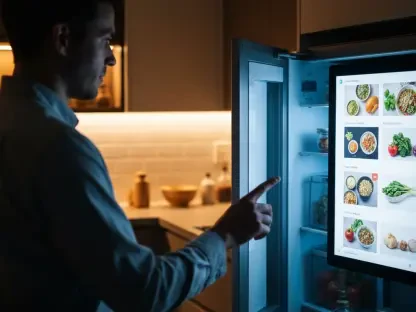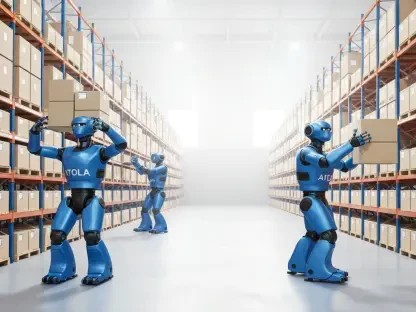In the rapidly progressing world of music technology, mobile music production apps stand as a testament to the intersection between art and digital innovation. These applications have catalyzed a profound shift in how music is created, recorded, and shared, offering capabilities that were once confined to traditional desktop software. As users increasingly rely on mobile devices for various tasks, the advent of mobile music production technology provides new opportunities for both amateur musicians and seasoned professionals. This review aims to explore the current landscape of these apps, focusing on their features, recent trends, and implications for the future of music production.
Evolution and Core Principles of Mobile Music Production Apps
Tracing the history of mobile music production apps reveals an intriguing trajectory from rudimentary tools to sophisticated platforms. Initially, these applications served as mere companions to their more complex desktop counterparts, supporting limited functionality on devices like Apple’s early iOS offerings. Over time, however, apps like GarageBand introduced pivotal advancements, making it feasible to create music directly on mobile devices with impressive versatility.
Mobile apps have thus entered a significant position within the broader music production ecosystem. They allow users to manipulate audio samples, compose intricate tracks, and share completed works seamlessly, reflecting the evolving demands of modern music creation. In doing so, they contribute significantly to the democratization of music production, facilitating entry into this creative field without the need for extensive physical hardware.
Key Features Enhancing Music Creation Experience
Intuitive User Interfaces
A fundamental strength of mobile music production apps lies in their intuitive user interfaces, which prioritize simplicity and ease of use. Such interfaces are designed to attract users by offering a streamlined experience that mirrors natural workflows. These designs enable users of varying skill levels to navigate the application efficiently, resulting in heightened productivity and enjoyment.
Expansive Sound Libraries
Sound libraries have emerged as a cornerstone of mobile music applications, offering users access to diverse samples that can enhance their creative endeavors. These libraries are evaluated for their quality, breadth, and usability, each aspect contributing to the richness of the compositions that can be produced. This enables users to leverage a variety of sounds that cater to different musical tastes and production styles.
Seamless Integration with Other Tools
Many mobile applications are designed to integrate seamlessly with existing software and hardware, bridging the gap between mobile and desktop processes. This capability allows users to expand their creative potential by incorporating external instruments and software, enhancing the depth and complexity of the music produced. By supporting such integration, these apps facilitate a hybrid approach to music creation that is adaptable to diverse user needs.
Latest Trends and Developments
Noteworthy advancements have recently been made in mobile music production technology, with applications incorporating state-of-the-art features to stand out in a competitive market. Among the notable developments is the use of artificial intelligence to aid composition, offering new tools for users to explore creative ideas. Another emerging trend is the social component integrated into some apps, which allows users to connect, collaborate, and share music effortlessly, fostering a community of creators.
Shifts in consumer behavior indicate a growing preference for flexibility and on-the-go productivity, propelling mobile music apps into mainstream usage. This trend underscores the importance of continual innovation in application design and functionality, ensuring these tools remain relevant and effective for evolving user demands.
Application and Influence Across Various Domains
The versatility of mobile music production apps has led to their adoption across numerous industries beyond traditional music production. Educational institutions, for example, have integrated these technologies into music curricula, offering students an interactive way to engage with music theory and practice. Additionally, content creators and artists across multimedia platforms leverage these tools to enhance their digital projects, further broadening the scope of applications for mobile music production.
Both aspiring musicians and seasoned professionals now embrace mobile apps as vital instruments in their creative arsenal. The accessibility and capabilities provided by these platforms empower individuals to explore new artistic frontiers with relative ease.
Overcoming Challenges and Limitations
Despite their many advantages, mobile music production apps face notable challenges that could impede their widespread adoption. Technical constraints, such as limited processing power or storage capacity of mobile devices, can hinder complex production processes. Additionally, regulatory hurdles surrounding digital rights management and licensing may impede the sharing and distribution of music created on these platforms.
Industry players are actively developing solutions to overcome these barriers, striving to enhance app performance and user experience. Efforts include optimizing software algorithms to improve efficiency and advancing cloud-based solutions to mitigate hardware limitations.
Anticipated Advances and Outlook
Looking to the future, mobile music production technology is poised for further innovation and transformation. The potential for breakthroughs in artificial intelligence and machine learning could introduce entirely new dimensions to music creation, enabling unprecedented customization and creativity. These technologies may result in more powerful, immersive music production experiences, boosting engagement and output quality.
In addition to fueling individual creativity, advancements in this domain are likely to reshape related industries, impacting everything from music education to multimedia entertainment. Mobile music production apps have the potential to redefine how music is conceptualized, produced, and consumed.
Final Assessment and Overall Impact
In conclusion, mobile music production apps have played a transformative role in modernizing the way music is composed and shared. Through the convergence of user-friendly interfaces, expanded functionality, and seamless integration capabilities, these apps have democratized access to music production, empowering a diverse community of creators. Although challenges remain, consistent innovation within this field has ensured a bright future for mobile music production technology. Looking ahead, these tools are set to further revolutionize the music industry, heralding a new era of creativity and accessibility for music makers around the world.









